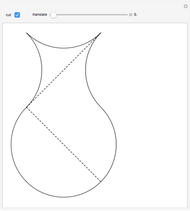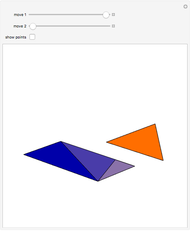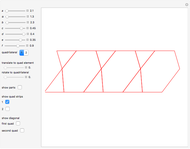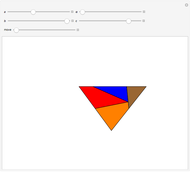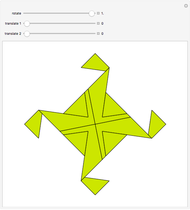Lindgren's Dissection of a Parallelogram to a Parallelogram

Requires a Wolfram Notebook System
Interact on desktop, mobile and cloud with the free Wolfram Player or other Wolfram Language products.
This Demonstration shows Lindgren's parallelogram-to-parallelogram dissection. Translating a parallelogram along its base we get a P-strip (parallelogram strip). The intersection of P-strips of the given parallelograms is another parallelogram, and it determines the parts of dissection. The parameter  is the lengths of the base of the first parallelogram and
is the lengths of the base of the first parallelogram and  is the angle between the base and the leg. The parameters
is the angle between the base and the leg. The parameters  and
and  determine the second parallelogram.
determine the second parallelogram.
Contributed by: Izidor Hafner (October 2013)
Open content licensed under CC BY-NC-SA
Snapshots
Details
This Demonstration transforms one parallelogram into another parallelogram using a dissection method known as the P-strip technique. Parallelograms in a strip form a P-strip. Overlapping P-strips give an intersection that determines the parts of the dissection.
References
[1] G. N. Frederickson, Dissections: Plane & Fancy, New York: Cambridge University Press, 2002 p. 139. www.cs.purdue.edu/homes/gnf/book.html.
[2] G. N. Frederickson, Hinged Dissections: Swinging & Twisting, New York: Cambridge University Press, 2002 pp. 102–103. www.cs.purdue.edu/homes/gnf/book2.html.
Permanent Citation
"Lindgren's Dissection of a Parallelogram to a Parallelogram"
http://demonstrations.wolfram.com/LindgrensDissectionOfAParallelogramToAParallelogram/
Wolfram Demonstrations Project
Published: October 7 2013








